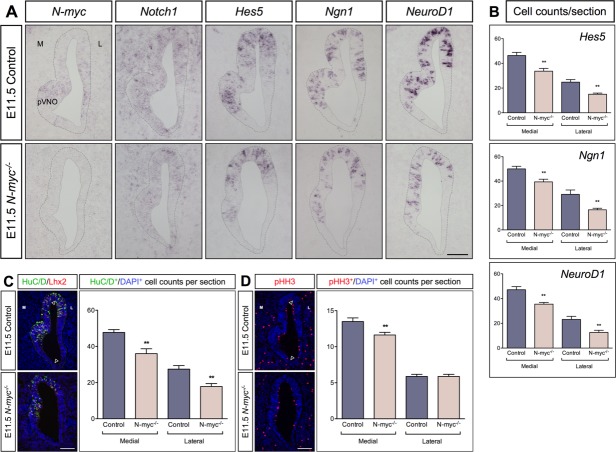Figure 3.
Altered proliferation, neurogenesis, and morphology in the olfactory epithelium at E11.5. (A) N-myc expression is completely missing in the olfactory epithelium of E11.5 N-myc−/− mice, Notch1 expression is down-regulated and the generation of Hes5+ progenitors, Ngn1+ neuronal precursors, and NeuroD1+ cells are decreased compared to controls. At this stage, the morphology of the olfactory epithelium is disturbed, displaying a less prominent area of the prospective vomeronasal organ (pVNO) in mutant mice. (C,D) The number of HuC/D+ and Lhx2+ post-mitotic neurons (C), and the number of pHH3+ mitotic cells are reduced (D). The borders between the medial (M) and lateral (L) part of the olfactory epithelium are indicated by arrowheads. (B–D) Statistical analysis of the cell counts in comparison to the total cell number defined by DAPI in the E11.5 olfactory epithelium of controls (n = 7) and N-myc−/− embryos (n = 6) for Hes5 (control versus N-myc−/− medial **p = 0.0041, and lateral **p = 0.0013), Ngn1 (control versus N-myc−/− medial **p = 0.0060, and lateral **p = 0.0071), NeuroD1 (control versus N-myc−/− medial **p = 0.0023, and lateral **p = 0.0062), HuC/D (control versus N-myc−/− medial **p = 0.0025, and lateral **p = 0.0037), and pHH3 (control versus N-myc−/− medial, n = 8, **p = 0.0096). Error bars represent ±SEM, Student's t test. Scale bars: 100 = µm.

